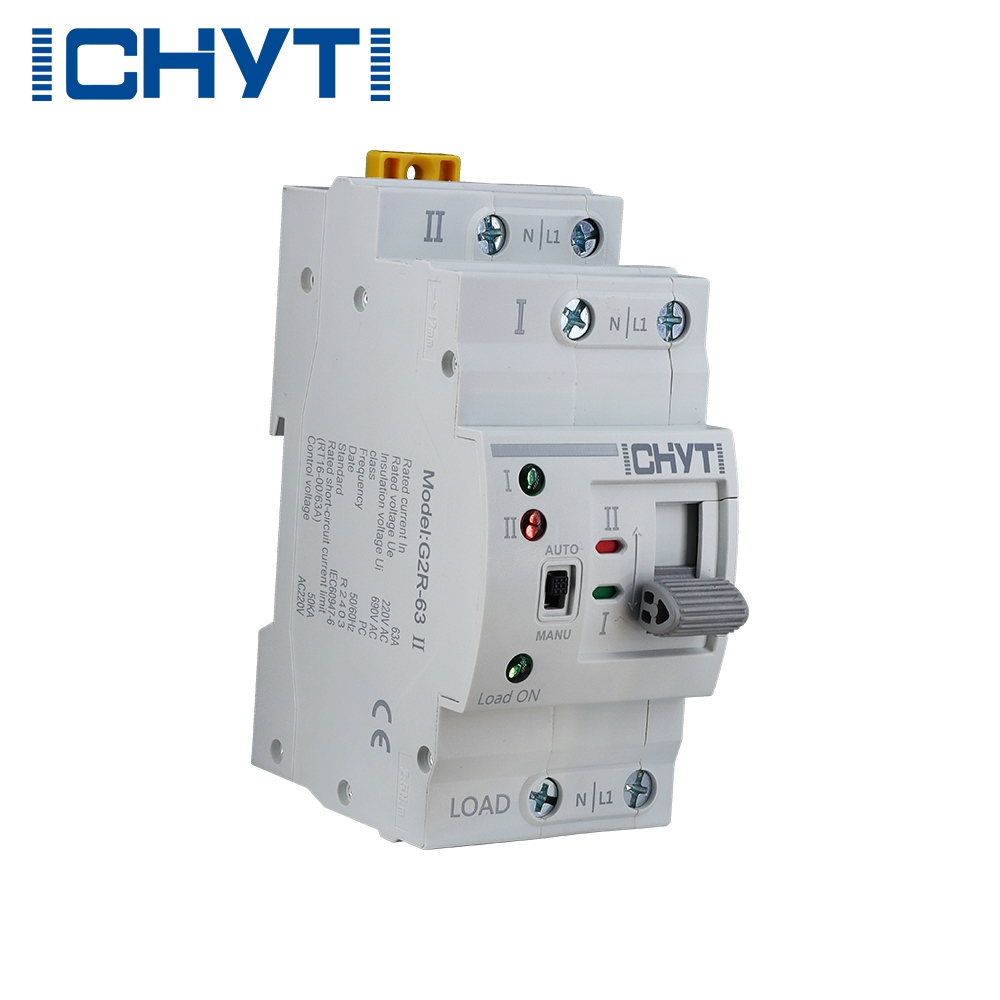Automatic Transfer Switch: Ensuring Uninterrupted Power Supply
2025-05-12
In an era where continuous access to electricity is essential for both residential and commercial environments, ensuring a seamless power supply has become a top priority. Automatic Transfer Switches (ATS) are pivotal components in achieving this goal, as they play a crucial role in ensuring an uninterrupted power supply during power outages or disruptions. In this article, we will explore what an Automatic Transfer Switch is, its importance, and the benefits it offers in modern electrical systems.

What is an Automatic Transfer Switch?
An Automatic Transfer Switch (ATS) is a device that automatically switches the power supply from the main electrical source to a backup power source, such as a generator, when it detects a power failure or significant voltage drop. Once the main power supply is restored, the ATS automatically switches back to the primary power source, ensuring a smooth transition without manual intervention.
ATS systems are essential in locations where consistent power is critical, such as hospitals, data centers, manufacturing facilities, and residential homes with backup generators. The key function of the ATS is to monitor the incoming power supply and act swiftly to transfer the load to the backup system, minimizing any disruption in the operation of essential equipment and appliances.
How Does an Automatic Transfer Switch Work?
The operation of an ATS is based on monitoring the electrical supply from the main power grid. Here’s how it works:
1. Power Loss Detection: The ATS continuously monitors the incoming voltage levels from the main power supply. When it detects a loss of power or if the voltage falls below a set threshold, the switch activates the backup power system.
2. Switching to Backup Power: After detecting a power failure, the ATS will signal the backup generator to start up. Once the generator is running, the ATS switches the load from the main grid to the generator, ensuring a continuous supply of power.
3. Reconnection to Main Power: After the main power is restored and the ATS senses a stable voltage, it automatically disconnects the backup generator and reconnects the load to the main power source.
4. Seamless Transition: Throughout this process, the ATS ensures that there is no interruption in power, and the transition between power sources happens smoothly and automatically.
Types of Automatic Transfer Switches
ATS devices come in various configurations, each designed for specific applications. The primary types include:
1. Open Transition ATS: This is the most common type of ATS. It disconnects the main power supply and then connects to the backup power supply. There is a brief moment when neither power source is supplying electricity, which may lead to a brief interruption. However, this type is affordable and works well in situations where a short power outage does not significantly affect operations.
2. Closed Transition ATS: This type ensures that there is no break in the power supply. It momentarily connects both the main power supply and the backup generator, creating an overlap before switching over to the backup source. This ensures a seamless transition, with no power interruption.
3. Delayed Transition ATS: In this setup, there is a delay before the backup power is activated after a power failure. This delay ensures that any brief power dips are not unnecessarily transferred to the generator, which can save wear and tear on the backup system.
4. Bypass Isolation ATS: These are specialized systems used in critical applications. Bypass isolation ATS allows for maintenance or replacement of the ATS without interrupting the power supply. It enables the user to bypass the ATS while the backup power remains connected, making it ideal for large-scale and sensitive operations like hospitals and data centers.
Benefits of an Automatic Transfer Switch
1. Uninterrupted Power Supply: The primary benefit of an ATS is the ability to provide continuous power during outages. This is especially important for businesses and industries where any downtime could lead to financial losses, safety risks, or system failures.
2. Enhanced Safety: An ATS eliminates the need for manual intervention during power failure situations. This reduces the risk of human error and ensures a safer operation of backup generators, reducing the chances of dangerous situations such as electrical shocks or fire hazards.
3. Automatic Operation: The automatic functionality of an ATS makes it incredibly user-friendly. It requires minimal maintenance and no manual effort to switch power sources, ensuring that users don’t need to be present when a power outage occurs. This is especially beneficial in locations where staff may not be available around the clock.
4. Cost Efficiency: ATS systems help reduce downtime, which can be costly in many industries. By ensuring that backup power systems are activated instantly when needed, businesses can prevent losses related to power outages, such as data loss in data centers or equipment damage in manufacturing plants.
5. Convenience for Residential Use: In residential applications, ATS systems are often used with backup generators. They allow homeowners to continue using essential appliances, such as refrigerators, HVAC systems, and lighting, during power outages without requiring manual intervention.
6. Protects Sensitive Equipment: Many modern technologies, such as computers, servers, and medical equipment, are highly sensitive to even brief interruptions in power. ATS helps protect such equipment by providing a constant power supply, minimizing the risk of equipment damage.
Applications of Automatic Transfer Switches
1. Hospitals and Healthcare Facilities: In healthcare environments, the constant availability of power is crucial for life-saving equipment, lighting, and ventilation systems. An ATS ensures that backup generators kick in immediately during a power failure, providing uninterrupted care.
2. Data Centers: Data centers rely on a continuous power supply to avoid data loss and downtime. ATS systems enable data centers to maintain power during outages, ensuring that servers and network systems remain operational at all times.
3. Commercial and Industrial Buildings: Businesses and industrial facilities depend on ATS systems to keep operations running smoothly in case of power disruptions. Whether it’s keeping production lines operational or maintaining lighting and HVAC systems, an ATS is a crucial component of business continuity.
4. Residential Use: For homes with backup generators, ATS provides peace of mind by automatically switching to backup power during an outage. Homeowners can ensure that critical systems like refrigerators, heating, and medical equipment continue to function without manual effort.
Conclusion
The Automatic Transfer Switch is an essential component for ensuring a reliable, uninterrupted power supply in various applications. Whether in residential homes or large commercial buildings, ATS systems offer peace of mind by automatically transferring to backup power during outages and ensuring that power is restored when the main grid is stable. With its seamless operation, safety features, and cost-saving potential, the ATS has become a vital tool in modern electrical systems, helping to maintain continuity and protect sensitive equipment from damage. As power reliability becomes increasingly important, the use of ATS devices will continue to grow, providing more secure, efficient, and dependable power solutions for businesses and homeowners alike.


